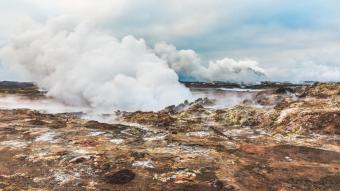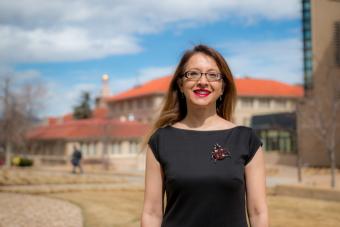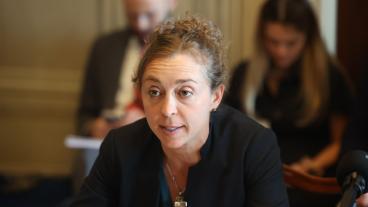Harnessing heat: Applying machine learning to geothermal exploration

As radioactive particles in the Earth’s core decay, temperatures rise, heating nearby rocks and reservoirs of water. The water surfaces as steam or hot water, which can be used to power turbines and produce electricity.
However, finding and developing new geothermal resources can be a challenge.
But Sebnem Duzgun, professor and Fred Banfield Distinguished Endowed Chair of Mining Engineering, and her research team have a potential solution — using machine learning techniques to analyze hyperspectral images and geophysical data to develop a way to identify the presence of geothermal resources based on surface and subsurface characteristics.
We talked to Duzgun about this U.S. Department of Energy-funded project and what an expansion of geothermal resources could bring to the table.

Q: What are the benefits of using machine learning to analyze remote-sensing hyperspectral images?
Sebnem Duzgun: Hyperspectral images contain fine details of information about the materials. However, identifying a specific material — like geothermal indicator minerals — from a hyperspectral image cube is a complex process. Machine learning algorithms will allow us to map the abundance of the specific indicator minerals for geothermal sites with high accuracy. Later, these maps will allow us to correlate surface and subsurface characteristics of geothermal sites.
Q: What are the challenges of this project?
Duzgun: Artificial intelligence algorithms require a large number of labeled data about the existence and nonexistence of geothermal sites, and obtaining this data is challenging. However, we plan to overcome this challenge using the results of machine learning algorithms for labeling purposes. Although such model-based labeling will contain errors, we believe that understanding the correlation between surface and subsurface data will help us to reduce those errors.
Q: How might an increase in geothermal resources affect the United States’ energy profile?
Duzgun: We aim to enhance the geothermal exploration process, which will ultimately reduce its costs. When the exploration process improves, the investments are also expected to improve. Developing geothermal resources will leverage the energy transition process.




